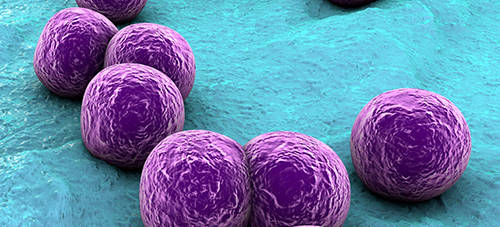The bugs within
It’s easy to forget that a diverse ecological population of foreign species lies within inches of your pancreas. In healthy individuals, trillions of microbes are nestled amongst the dark mountains and valleys of microvilli in a homeostatic symbiosis with their host. These microbes, or gut microbiota, perform metabolic functions as complex as conventional internal organs. The gut microbiota has come into the spotlight in recent years with significant roles identified in regulating nutrition and obesity, cancer, psychology, and autoimmunity. Type 1 Diabetes (T1D) is one autoimmune disease where T cells attack the patient’s insulin-producing cells of the pancreas and where the gut microbiota may influence the T cell subsets present. A research group led by Dr. Alexander Chervonsky at the University of Chicago has set out to explore the relationship between the gut microbiota and T1D development using germ-free genetic mouse models of the disease.

The hidden organ finds its role in diabetes development
The Chervonsky group previously demonstrated that T1D development relies on contributions from commensal gut microbiota signaling through toll-like receptors (TLRs) (Wen et al. 2008). Non-obese diabetic (NOD) mice (NOD/ShiLtJ, 001976), the classic mouse model for T1D, that had lost signaling though the TLR central adapter protein, MyD88, did not develop diabetes when housed under specific pathogen free (SPF) conditions, but did develop diabetes when housed under completely germ-free conditions. These results suggested that gut microbes acting through a MyD88-independent pathway protect against T1D development.
A balancing act between specific TLRs
In the current study, the Chervonsky group further defined the roles of specific populations of gut microbiota and TLRs either to potentiate or to prevent T1D development (Burrows et al. 2015). Germ-free NOD MyD88-null mice inoculated with various collections of defined flora were protected against T1D development, whereas wild-type NOD mice were not. These observations suggested that MyD88- dependent signaling is prodiabetic, whereas MyD88-independent signaling is protective against T1D. Despite their protective effects on preventing T1D, none of these individual cocktails were as effective as previously observed in NOD MyD88-null mice when they were housed under SPF conditions and with their inherent gut flora intact, suggesting that a diverse microbial population is required for full protection.
Most TLRs signal through MyD88, with the exceptions of TLR3 and TLR4. NOD mice lacking just TLR4, (i.e. NOD mice homozygous for the Tlr4del null allele derived from C57BL/10ScNJ, 003752), showed accelerated T1D development under SPF conditions, but were indistinguishable from controls when maintained under germ-free conditions. In contrast, NOD mice lacking TLR2, which signals exclusively through MyD88, showed reduced T1D under SPF conditions, but had robust TID induction under germ-free conditions. Together with the data from the double mutant mice described above, these data suggest that the anti-T1D protective effects of the microbiome are mediated, at least in part, by a TLR4/TRIF pathway.
Collectively, these results demonstrate a complex balance of signaling within the gut microbiome that may influence Type 1 Diabetes disease susceptibility. Because diet may vary widely over time, gut microbiota is in perpetual flux, and the ultimate expression of disease is likely integrated at many levels within the individual, both inside and outside of the gut.